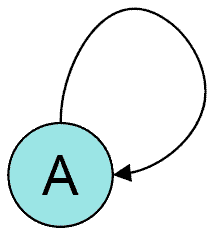Autoregulation


Autoregulation is a process within many biological systems, resulting in the ability of an organ or tissue to maintain a stable blood flow despite changes in perfusion pressure. This mechanism is crucial for ensuring consistent delivery of nutrients and removal of waste products, regardless of variations in systemic blood pressure. Autoregulation is observed in several key organs, including the brain, kidneys, and heart, and plays a vital role in maintaining homeostasis.
Mechanisms of Autoregulation[edit]
Autoregulation involves various mechanisms that adjust the diameter of blood vessels to maintain a constant blood flow. These mechanisms can be broadly classified into myogenic and metabolic responses.
Myogenic Response[edit]
The myogenic response is a reaction to changes in blood pressure. When the pressure increases, vascular smooth muscle cells in the walls of arterioles stretch and respond by contracting, which narrows the vessel and reduces blood flow, thus protecting downstream capillaries from high pressure. Conversely, a decrease in blood pressure leads to relaxation of these muscles, dilating the vessels and allowing more blood to flow through.
Metabolic Response[edit]
Metabolic autoregulation responds to the metabolic activity of the tissue. Increased activity elevates the demand for oxygen and nutrients while producing more metabolic waste. This imbalance leads to the production of vasodilators (such as adenosine, carbon dioxide, and hydrogen ions) that relax smooth muscle cells, dilating the blood vessels and increasing blood flow to the area. As the metabolic activity decreases, less vasodilator substances are produced, and the vessels constrict, reducing blood flow.
Clinical Significance[edit]
Autoregulation plays a critical role in the pathophysiology of various diseases. Impaired autoregulation can lead to conditions such as hypertension, where high blood pressure can damage blood vessels and organs over time. In the brain, loss of autoregulation increases the risk of stroke and other cerebrovascular diseases. Understanding autoregulation mechanisms is also essential for managing patients in critical care settings, especially those with fluctuating blood pressures.
Autoregulation in Specific Organs[edit]
Brain[edit]
The brain relies on a constant supply of oxygen and glucose, making autoregulation crucial for its function. The brain's autoregulation adjusts cerebral blood flow based on changes in blood pressure and metabolic demand, protecting it from ischemia and hyperperfusion.
Kidneys[edit]
The kidneys maintain autoregulation through the myogenic mechanism and the tubuloglomerular feedback mechanism, ensuring stable glomerular filtration rate (GFR) and efficient removal of waste products from the blood.
Heart[edit]
Coronary autoregulation adjusts blood flow to the myocardium, ensuring that the heart muscle receives sufficient oxygen and nutrients to meet its metabolic demands, especially during increased activity.
Conclusion[edit]
Autoregulation is a fundamental physiological process that ensures stable blood flow to organs despite fluctuations in blood pressure. Its mechanisms involve complex interactions between myogenic and metabolic responses. Understanding these processes is essential for diagnosing and treating various cardiovascular and cerebrovascular diseases.
Ad. Transform your life with W8MD's Budget GLP-1 injections from $75


W8MD offers a medical weight loss program to lose weight in Philadelphia. Our physician-supervised medical weight loss provides:
- Weight loss injections in NYC (generic and brand names):
- Zepbound / Mounjaro, Wegovy / Ozempic, Saxenda
- Most insurances accepted or discounted self-pay rates. We will obtain insurance prior authorizations if needed.
- Generic GLP1 weight loss injections from $75 for the starting dose.
- Also offer prescription weight loss medications including Phentermine, Qsymia, Diethylpropion, Contrave etc.
NYC weight loss doctor appointmentsNYC weight loss doctor appointments
Start your NYC weight loss journey today at our NYC medical weight loss and Philadelphia medical weight loss clinics.
- Call 718-946-5500 to lose weight in NYC or for medical weight loss in Philadelphia 215-676-2334.
- Tags:NYC medical weight loss, Philadelphia lose weight Zepbound NYC, Budget GLP1 weight loss injections, Wegovy Philadelphia, Wegovy NYC, Philadelphia medical weight loss, Brookly weight loss and Wegovy NYC
|
WikiMD's Wellness Encyclopedia |
| Let Food Be Thy Medicine Medicine Thy Food - Hippocrates |
Medical Disclaimer: WikiMD is not a substitute for professional medical advice. The information on WikiMD is provided as an information resource only, may be incorrect, outdated or misleading, and is not to be used or relied on for any diagnostic or treatment purposes. Please consult your health care provider before making any healthcare decisions or for guidance about a specific medical condition. WikiMD expressly disclaims responsibility, and shall have no liability, for any damages, loss, injury, or liability whatsoever suffered as a result of your reliance on the information contained in this site. By visiting this site you agree to the foregoing terms and conditions, which may from time to time be changed or supplemented by WikiMD. If you do not agree to the foregoing terms and conditions, you should not enter or use this site. See full disclaimer.
Credits:Most images are courtesy of Wikimedia commons, and templates, categories Wikipedia, licensed under CC BY SA or similar.
Translate this page: - East Asian
中文,
日本,
한국어,
South Asian
हिन्दी,
தமிழ்,
తెలుగు,
Urdu,
ಕನ್ನಡ,
Southeast Asian
Indonesian,
Vietnamese,
Thai,
မြန်မာဘာသာ,
বাংলা
European
español,
Deutsch,
français,
Greek,
português do Brasil,
polski,
română,
русский,
Nederlands,
norsk,
svenska,
suomi,
Italian
Middle Eastern & African
عربى,
Turkish,
Persian,
Hebrew,
Afrikaans,
isiZulu,
Kiswahili,
Other
Bulgarian,
Hungarian,
Czech,
Swedish,
മലയാളം,
मराठी,
ਪੰਜਾਬੀ,
ગુજરાતી,
Portuguese,
Ukrainian
